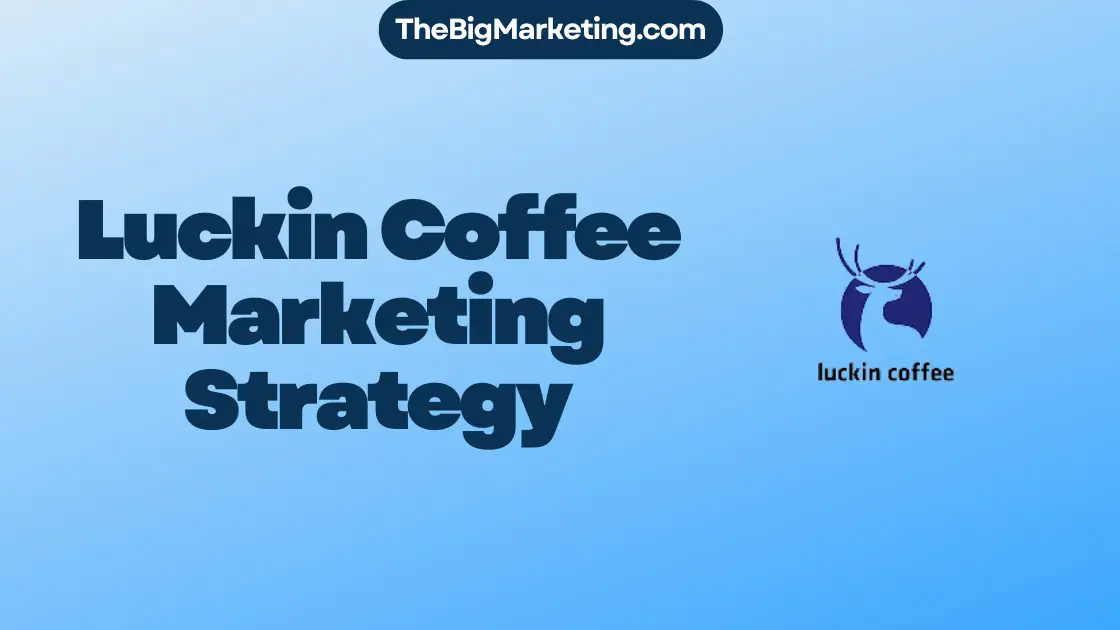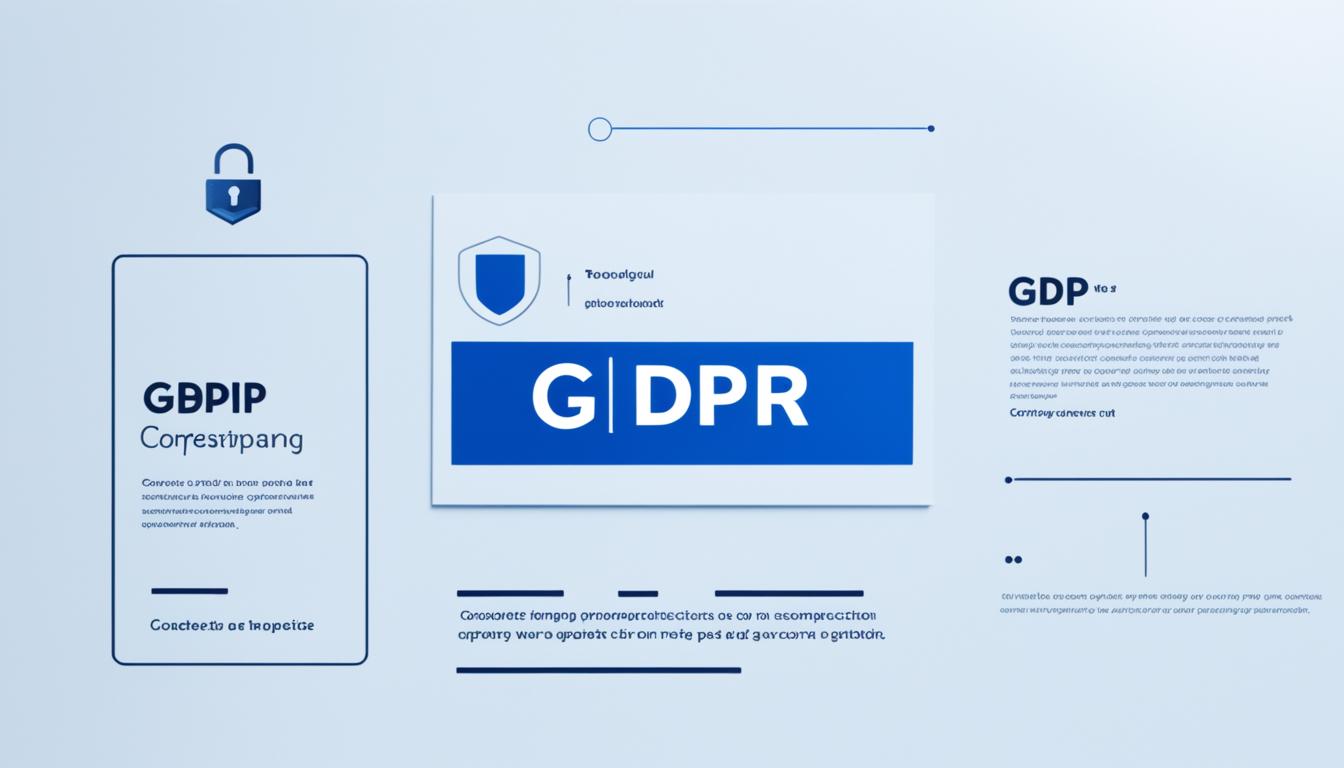Honda is a Japanese multinational company that is one of the largest manufacturers of automobiles and motorcycles in the world. With a diverse product lineup that includes motorcycles, scooters, and big bikes, Honda has built a reputation for reliability, performance, and innovation. In this case study, we will delve into Honda’s marketing strategy for the iconic Honda Civic, exploring how they have successfully positioned the model in the market and attracted a loyal customer base.
Key Takeaways:
- Honda’s marketing strategy for the Honda Civic is customer-centric and focused on innovation.
- They target the middle-income group and have recently started focusing on younger drivers and young families.
- Honda utilizes a mix of demographic, psychographic, and geographic segmentation variables to understand their target markets.
- Their pricing strategy is affordable, making the Honda Civic accessible to a wide range of customers.
- Honda has a strong distribution network with authorized dealers and emphasizes sustainability throughout their operations.
The Genesis of Honda: From Humble Beginnings to Global Recognition
Honda Motor Company, founded in 1948 by Soichiro Honda, has grown from a small workshop producing motorized bicycles into a global automotive giant. Soichiro Honda, a visionary entrepreneur, laid the foundation for the company’s success with his passion for engineering and innovation.
Innovation has been a driving force behind Honda’s growth. The company has introduced groundbreaking technologies that have revolutionized the automotive industry. Some of their notable innovations include the CVCC engine, VTEC technology, and hybrid systems. These advancements have set Honda apart from its competitors and positioned them as an industry leader in innovation.
Honda’s global recognition is a result of their strategic expansion. The company has established manufacturing plants strategically located around the world to cater to different market segments. Honda understands the importance of understanding the cultural nuances of each market and tailoring their product lineup accordingly.
Over the years, Honda has overcome various challenges, including oil crises, quality control issues, and economic downturns. Their commitment to innovation and adaptability has allowed them to navigate these challenges and emerge stronger.
| Soichiro Honda’s Vision and Workshop | Honda Motor Company Today |
|---|---|
| Soichiro Honda’s passion for engineering and innovation | Honda’s global presence with manufacturing plants worldwide |
| Foundation of Honda’s success | Continuous introduction of groundbreaking technologies |
| Innovation as a driving force behind Honda’s growth | Understanding cultural nuances and diverse product lineup |
The story of Honda is a testament to the power of vision, entrepreneurship, and innovation. From its humble beginnings as a small workshop, Honda has transformed into a global automotive giant. Today, the company continues to push boundaries and redefine the industry with its innovative products and customer-centric approach. Honda’s commitment to sustainability further reinforces its position as a leader in the automotive sector.
Honda’s Key Marketing Strategies
Honda has developed a comprehensive and customer-centric marketing approach that considers all facets of the marketing ecosystem. Their holistic marketing strategy focuses on customer satisfaction, taking into account the needs and preferences of their target customers. Personal selling plays a crucial role in Honda’s promotional strategy, allowing them to engage directly with customers and provide them with a positive buying experience.
In order to effectively reach their target market, Honda places great emphasis on understanding consumer behavior. By gaining insights into consumer preferences and motivations, Honda is able to tailor their products and marketing efforts accordingly. This enables them to connect with their customers on a deeper level and create meaningful experiences.
As part of their marketing mix, Honda employs a market penetration pricing strategy to make their products more accessible to a wider range of customers. This pricing strategy allows Honda to capture market share and establish a strong presence. They promote their products through various channels, including print media and social media, to maximize their reach and generate brand awareness.
Honda’s marketing strategies are characterized by their dedication to showcasing their technological advancements and their commitment to sustainability. By highlighting their innovative features and eco-friendly image, Honda sets itself apart from its competitors and appeals to environmentally conscious customers.
Benefits of Honda’s Holistic Marketing Approach
Honda’s holistic marketing approach brings several benefits to the table. By considering all aspects of marketing, Honda ensures that their strategies align with the needs of their target customers. This customer-centric focus enables them to build strong relationships and loyalty among their customer base.
Additionally, Honda’s emphasis on personal selling allows them to establish direct connections with customers. This face-to-face interaction fosters trust and enhances the overall buying experience, leading to higher customer satisfaction.
Understanding consumer behavior is another key benefit of Honda’s marketing strategies. By delving into the motivations and preferences of their target market, Honda is able to design products and campaigns that resonate with their customers. This customer-centric approach increases the effectiveness of their marketing efforts and boosts customer engagement.
Furthermore, Honda’s market penetration pricing strategy helps them capture a larger market share by offering competitive prices that appeal to a broader audience. This strategy allows them to reach more customers and generate higher sales volumes.
Overall, Honda’s key marketing strategies, including their holistic approach, customer-centric focus, personal selling, and in-depth understanding of consumer behavior, contribute to their success in the highly competitive automotive industry. By constantly evolving and adapting their marketing strategies, Honda continues to meet the ever-changing needs and preferences of their customers.
| Benefits of Honda’s Key Marketing Strategies |
|---|
| Customer-centric approach |
| Enhanced customer satisfaction |
| Direct customer interaction through personal selling |
| Improved customer relationships and loyalty |
| Understanding and catering to consumer behavior |
| Effective product design and marketing campaigns |
| Market penetration pricing strategy for increased market share |
| Broader customer reach and higher sales volumes |
Honda’s Product Strategy
Honda is renowned for its wide range of innovative products, catering to various segments of the market. From motorcycles and scooters to big bikes, Honda offers diverse options to meet the unique preferences and needs of customers.
In line with their commitment to enriching the lives of their customers, Honda’s product strategy revolves around continuous innovation and the introduction of advanced technologies. They are constantly pushing boundaries and developing new models that incorporate cutting-edge features.
In the motorcycles segment, Honda provides options for different market segments, including top executives, young executives, teenagers, and females. Whether it’s a powerful sports bike or a practical and stylish commuter bike, Honda has something for everyone.
When it comes to scooters, Honda has established a strong presence in the market with a variety of models. Their scooters are known for their reliability, fuel efficiency, and modern designs, making them a popular choice among urban commuters.
Honda also caters to the luxury segment with their big bikes. These motorcycles are designed to provide an exceptional riding experience, combining performance, style, and comfort. With their powerful engines, advanced technology, and premium craftsmanship, Honda’s big bikes are sought after by enthusiasts who value quality and sophistication.
Overall, Honda’s product strategy is centered on delivering high-quality, technologically advanced products that exceed customer expectations. By understanding the diverse needs and preferences of their customers, Honda continues to innovate and create products that enhance the joy of mobility.
Honda’s Price Strategy
Honda employs an affordable pricing strategy, particularly targeting the middle-income group. By offering a wide range of products at competitive prices, Honda aims to make its offerings accessible to a larger customer base. The company also implements penetration pricing, initially setting artificially low prices to gain market share and gradually increasing prices over time.
For customers looking for high-performance options, Honda offers sports bikes that combine speed and style. These bikes cater to individuals with a passion for adrenaline and thrill. On the other hand, for those seeking luxury and sophistication, Honda provides a range of luxury bikes that boast premium features and cutting-edge technology.
This pricing strategy is strategically aligned with Honda’s target market and their commitment to delivering value for money to their customers. Whether it’s affordability, sports bikes, or luxury bikes, Honda strives to meet the diverse needs and preferences of all motorcycle enthusiasts.
| Product Type | Description |
|---|---|
| Sports Bikes | High-performance motorcycles designed for speed and agility. These bikes are a perfect choice for thrill-seekers. |
| Luxury Bikes | Premium motorcycles featuring top-of-the-line technology, comfort, and style. Designed to provide a luxurious riding experience. |
Honda’s Place Strategy
In order to ensure easy accessibility to their products, Honda has developed a robust place strategy that revolves around an extensive distribution channel and direct contact with authorized dealers. By establishing a strong network of authorized dealers, Honda enables efficient communication and a seamless buying experience for customers.
These authorized dealers play a crucial role in delivering Honda products directly to customers. They act as the primary distribution channel through which customers can purchase Honda motorcycles, scooters, and big bikes. This direct contact between Honda and its dealers facilitates effective communication, ensuring that customers receive accurate information and prompt assistance.
In addition to authorized dealers, Honda also maintains showrooms in major cities throughout the country. These showrooms serve as physical spaces where customers can explore and interact with a variety of Honda products. The showrooms are designed to provide a comprehensive and engaging experience, showcasing the diverse range of Honda’s offerings.
By strategically placing showrooms in prominent locations, Honda ensures that customers can easily access their products and obtain first-hand information. This approach enhances customer convenience and satisfaction, as they can physically examine the products before making a purchase decision.
The combination of authorized dealers and showrooms allows Honda to establish a strong presence in the market and cater to the needs of customers in various locations. Their distribution strategy prioritizes accessibility and seamless customer experiences, ensuring that Honda products are readily available and easily accessible to customers across the country.
Authorized Dealer Showroom
The authorized dealer showroom provides customers with a physical space to explore and interact with Honda’s diverse range of products. The showroom is designed to offer a comprehensive and engaging experience, allowing customers to make informed purchase decisions.
Honda’s Promotional Strategy
Honda utilizes an aggressive marketing approach to promote its brand and products. One of the key channels they leverage is TV advertising, allowing them to reach a wide audience and showcase their offerings. Their TV ads are thoughtfully crafted with different themes to attract customers and create brand awareness. By utilizing innovative campaigns, such as the successful “You meet the nicest people on Honda” campaign, Honda effectively engages with its target audience and establishes a strong brand presence.
In addition to TV advertising, Honda places a strong emphasis on social media marketing. With a significant presence on platforms like Instagram, Facebook, and Twitter, they effectively engage with their target audience and promote their brand. Through social media marketing, Honda not only creates brand awareness but also connects with their customers on a personal level.
Honda’s promotional strategy revolves around creating brand awareness, showcasing their technological advancements, and building strong customer relationships. By employing aggressive marketing tactics, leveraging TV advertising, implementing innovative campaigns, and harnessing the power of social media marketing, Honda effectively positions itself as a leading automotive brand.
Innovative Campaigns by Honda
Honda has been at the forefront of launching innovative campaigns that capture the attention of their target audience. One notable campaign is the “You meet the nicest people on Honda” campaign, which aimed to challenge stereotypes associated with motorcycle riders. By portraying Honda riders as friendly and approachable individuals, the campaign successfully altered public perception and enhanced the brand’s image.
Honda Social Media Marketing
Honda recognizes the importance of social media marketing in today’s digital age. They utilize various social media platforms, including Instagram, Facebook, and Twitter, to promote their brand and engage with their customers.
Honda’s social media strategy revolves around creating innovative posts and content that effectively portray their brand image and attract customers. By delivering fresh and captivating content, Honda establishes itself as a brand at the forefront of innovation.
One of Honda’s key tactics is leveraging social media for festive marketing. They create posts that align with current market trends, utilizing culturally significant events to connect with their target audience and amplify their brand presence.
During the COVID-19 lockdown, Honda adapted its social media marketing approach to remain relevant and socially responsible. They used their platforms to generate awareness about the pandemic and promote the importance of staying home and abiding by safety measures.
Honda’s strong presence on social media reflects the trust and belief customers have in the brand. Through consistent engagement, Honda maintains a positive brand image and fosters meaningful relationships with its audience.
Competitor Analysis
Honda faces stiff competition from major players in the automotive industry, including Volkswagen, Toyota, and Ford. These brands have a strong market presence and invest heavily in marketing and research and development to gain a larger market share.
While Honda is renowned for its success as a leading manufacturer of motorcycles, it also competes fiercely with these brands in the automotive sector. The demand for vehicles has seen a significant rise, resulting in intense competition in the market.
Honda conducts regular competitor analysis to gain valuable insights into the strategies and market presence of Volkswagen, Toyota, and Ford. This analysis enables Honda to understand the market landscape, identify emerging trends, and stay competitive by continuously improving their products and marketing strategies.
Table: Major Competitors in the Automotive Industry
| Company | Market Presence | Research and Development Investment |
|---|---|---|
| Volkswagen | Global market presence with a diverse product portfolio | Invests heavily in research and development to drive innovation and technological advancements |
| Toyota | International market recognition with a strong customer base | Devotes significant resources to research and development, focusing on sustainable mobility solutions |
| Ford | Established presence in the automotive industry with a loyal customer following | Continuously invests in research and development to enhance vehicle performance and safety |
The table above provides an overview of the major competitors in the automotive industry and their market presence as well as their investment in research and development. By analyzing the competition, Honda can gain valuable insights into their strengths, weaknesses, and market strategies. This knowledge allows Honda to make informed decisions, ensuring their products and marketing efforts remain competitive in the ever-evolving automotive market.
Sustainable Management Practices
Sustainability is at the core of Honda’s operations, and they have implemented various management practices to reduce their environmental impact and promote a greener future. Through their commitment to sustainability, Honda has embraced a range of initiatives and policies that contribute to waste reduction, recyclability, and green purchasing.
Green Purchasing
One of the key aspects of Honda’s sustainable management practices is their green purchasing policy. This policy focuses on improving the environmental performance of their supply chain by sourcing materials and components from environmentally responsible suppliers. By prioritizing suppliers that adhere to sustainable practices, Honda ensures that their entire production process aligns with their commitment to sustainability.
Waste Reduction and Recycling
Honda places a strong emphasis on waste reduction and recycling in their manufacturing processes. They have implemented innovative technologies and procedures to minimize waste generation and maximize recycling potential. As part of their zero-waste-to-landfill strategy, Honda has established recycling programs for various materials, including wheels, engines, and batteries. By reusing and recycling these materials, Honda significantly reduces their environmental footprint and promotes the circular economy.
Fuel Efficiency and Emissions Reduction
As a leading automotive manufacturer, Honda recognizes the importance of prioritizing fuel efficiency and reducing emissions. They have implemented advanced technologies, such as hybrid systems, to enhance the fuel efficiency of their vehicles and minimize their carbon footprint. By continuously innovating and improving their engine performance, Honda aims to create more sustainable transportation solutions and contribute to a cleaner environment.
Honda’s Sustainable Management Practices
| Initiative | Description |
|---|---|
| Green Purchasing | Prioritizing environmentally responsible suppliers and materials throughout the supply chain. |
| Waste Reduction and Recycling | Implementing strategies and recycling programs to minimize waste generation and promote recycling. |
| Fuel Efficiency and Emissions Reduction | Developing technologies and engineering practices to enhance fuel efficiency and reduce emissions. |
By integrating sustainability into their management practices, Honda demonstrates their commitment to environmental stewardship and provides an example of responsible corporate citizenship. Their dedication to green purchasing, waste reduction, recyclability, zero-waste-to-landfill strategies, and recycling programs enables Honda to reduce their ecological impact and contribute to a more sustainable future.
Conclusion
Honda Motors has established itself as a global leader in the automotive industry through its innovative marketing strategy. By adopting a customer-centric approach and prioritizing continuous innovation, Honda has successfully catered to diverse market segments. Their wide range of products, including motorcycles, scooters, and big bikes, ensures that they meet the unique needs of their customers.
Affordability is a key aspect of Honda’s marketing strategy, making their products accessible to the middle-income group. This, coupled with a strong distribution network of authorized dealers, ensures that Honda reaches customers in various locations. Their promotional efforts, including innovative campaigns and social media marketing, have effectively built brand awareness and engaged their target audience.
Furthermore, Honda’s commitment to sustainability sets them apart from their competitors. They have implemented sustainable management practices throughout their operations, prioritizing waste reduction, recyclability, and fuel efficiency. With a focus on delivering high-quality products and building strong customer relationships, Honda Motors continues to thrive in the automotive industry.








